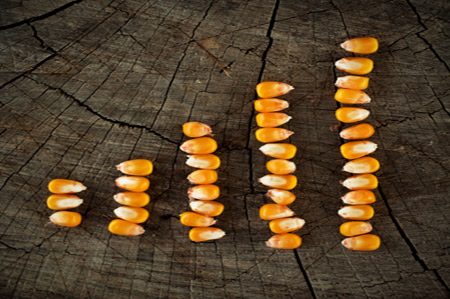 (AgWeb) – U.S. producers had the largest number of prevented planting acres for soybeans since USDA began releasing the numbers in 2007, but the real surprise was how much corn did not get planted, according to the Farm Service Agency’s prevented plantings figures released August 17.
(AgWeb) – U.S. producers had the largest number of prevented planting acres for soybeans since USDA began releasing the numbers in 2007, but the real surprise was how much corn did not get planted, according to the Farm Service Agency’s prevented plantings figures released August 17.
This year’s large prevented plantings were due primarily to persistent rains that plagued the Mississippi Delta states and Missouri through planting season.
“The 2.3 million acres of prevented plantings for corn is more than expected,” says Rich Nelson, chief strategist with Allendale, McHenry, Ill. “Unofficially we were expecting 1.5 million to 1.7 million acres. We knew the southern states had problems initially but we didn’t expect to see prevented plantings for corn this large.”
FSA’s prevented plantings figures, which are based on August 1 reports, show producers were unable to plant nearly 6.5 million acres, most of them corn and soybeans. Nelson expects the FSA insurance numbers to increase in the coming months as more crop insurance data is reported.
As of August 1, producers did not plant 2.3 million acres of corn, 2.17 million acres of soybeans, and 692,664 acres of wheat. The remaining acres that went unplanted were cotton (582,000 acres), rice (507,213) barley (27,908 acres), oats (5,981), sorghum (156,651), and sugar beets (1,869)
By far, Missouri was the state with the most prevented planting acres for both corn (506,039) and soybeans (1.02 million). Other states with more than 100,000 acres of prevented corn plantings were Arkansas (191,086), Colorado (193,976) Iowa (114,961), Louisiana (152,817), Mississippi (233,394), Nebraska (123,022), South Dakota (110,776), and Texas (170,528).
“Because a lot of the corn acres were in the South where yields are only 120 to 140 bushels per acre, even though overall prevent plantings were higher than expected, as a whole it might not make that much of a difference,” says Nelson.
The only states other than Missouri that had more than 100,000 acres of prevented soybean plantings were Arkansas with 105,542 acres and Illinois with 230,855 acres.
As for market impact, high soybean prevented plantings were expected, says Nelson, so the market impact will be negligible. But the corn numbers could have some affect on prices.
“People will wonder if USDA will lower acreage in the October or January Crop Production report,” says Nelson. He notes that while NASS had access to these numbers prior to last week’s World Agricultural Supply and Demand Estimates (WASDE), prevented plantings were not figured into the WASDE report because of the incomplete nature of the August prevented planting numbers.
Nelson notes that factoring in prevented plantings puts U.S. corn acreage at 93.5 percent of August’s official corn acres. Last year, FSA corn acres were 90.9 percent of official August acres, and in 2012, they were 91.2 percent.
“In the past two years when FSA acres were so low, official acres did decline by the January Crop Production report,” he says.
However, while prevented plantings will be positive for corn prices, the acreage swing is only about 1 million acres, Nelson says, and yield will play a much larger role in prices.
Last week, USDA shocked the markets with its average projected corn yield of 168.8 bushels per acre, which was 2 bushels per acre higher than July’s trend-based projection and much higher than the average trade estimate of 164.5 bushels per acre.




